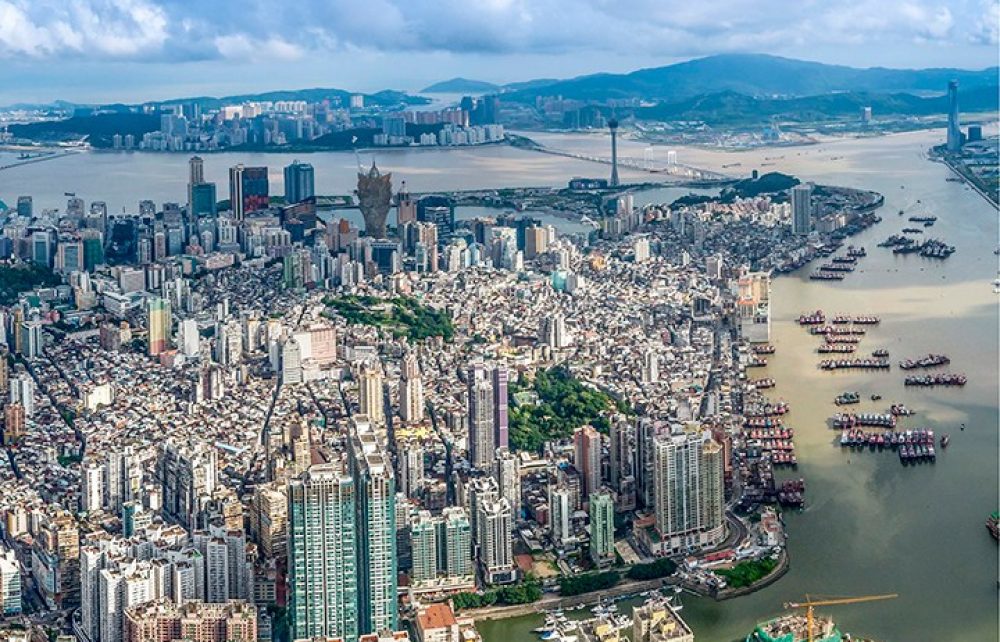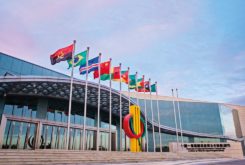A guaranteed annual return rate of 3.5% during the validity period of the Guangdong-Macao Cooperation Development Fund will compensate for the capital Macao will put into it.
Macao’s investment of 20 billion yuan (US$3.18 billion) will be used for infrastructure construction in the Guangdong province including the development of the Guangdong-Hong Kong-Macao Greater Bay Area.
The Greater Bay Area (GBA) is a metropolitan region comprising nine cities in the Guangdong province (Guangzhou, Shenzhen, Zhuhai, Foshan, Huizhou, Dongguan, Zhongshan, Jiangmen, Zhaoqing) and two special administrative regions (Hong Kong and Macao).
The Secretary for Economy and Finance of Macao, Leong Vai Tac, said only a few administrative procedures still had to be completed for the fund to be legally established, adding that he wanted it to become operational as soon as possible “to ensure the annual return of the portion of Macao’s financial reserve, and to boost the integration of Macao in the development of the Guangdong-Hong Kong-Macao Greater Bay.”
At end-2017, Macao’s financial reserves stood at MOP490 billion (US$61.2 billion), an annual increase of 11.7%, while the basic reserve was MOP127.9 billion and the extraordinary reserve at MOP362.1 billion.
Regardless of policy considerations, the Guangdong-Macao Cooperation Development Fund will have a 12-year lifespan, with Macao as limited liability partner and Guangdong province responsible for the investment projects.
The fund’s annual average income will be calculated after it has been operational for seven years. If the return is over 7.8%, all the outstanding value after settling and deducting the value of the risk reserve will then be split proportionately, with Macao receiving 55% and Guangdong 45%.
In recent statements during a session on the GBA at the 2018 Boao Forum for Asia that took place in Hainan, Leong said that the establishment of the GBA, based on the ‘one country, two systems’ principle opened unprecedented opportunities for regional cooperation with the emergence of new ideas, mindsets and concepts for development.
Speaking specifically about Macao, he said the territory should take advantage of the overseas Chinese community, namely Macao’s elites and those in mainland China, the Portuguese-speaking countries, the European Union and ASEAN. “That relationship can help attract foreign investors to the Greater Bay and gain markets in other countries and regions,” he stressed.
This March, Premier Li Keqiang announced that the development plan for the Guangdong-Hong Kong-Macao Greater Bay Area will be unveiled this year and is meant to enhance regional development. When he presented the government work report at the first session of the 13th National People’s Congress, Li said the development plan aimed to stimulate all areas that provide mutually beneficial cooperation between the mainland and the special administrative regions of Hong Kong and Macao.
The prime minister recalled that exchanges and cooperation between the mainland, Hong Kong and Macao have been increasing over the last five years. He particularly highlighted the construction of the Hong Kong–Zhuhai–Macao Bridge that will soon link the three cities. Improved relations between all three, will prove essential in the on-going work to develop the GBA. Other regions earmarked for coordinated development include Beijing-Tianjin-Hebei area in the north of the country and the Yangtze River Economic Belt in the east.
Guangdong Governor Ma Xingrui recently proposed the establishment of a government body to coordinate and oversee the development plan for the Guangdong-Hong Kong-Macao Greater Bay Area. During a meeting with Macao Chief Executive Chui Sai On, Ma acknowledged that cooperation between Guangdong and Macao has been excellent, which will make the creation of such a government body much easier.
Chinese policymakers have called for the creation of a government structure led by a minister, to serve as a liaison between the cities of the Guangdong province, Hong Kong and Macao. This southern Chinese region has an area of 56,000 sq km, a population of 66 million and a GDP of US$1.4 trillion.
Macao’s Statistics and Census Service recently launched a trilingual page on the Guangdong-Hong Kong-Macao Greater Bay Area with the aim of portraying the current state of human and economic development in the region. It presents key statistical indicators for various Greater Bay cities, along with data on economic and cultural interchanges between Macao and other cities in the region, serving as a reference for various social sectors.
The Macao Government Information Bureau Director, Victor Chan, also recently announced that the services he oversees will strengthen links with local media bodies to boost the promotion of the Belt and Road Initiative and the creation of the Guangdong-Hong Kong-Macao Greater Bay Area.




